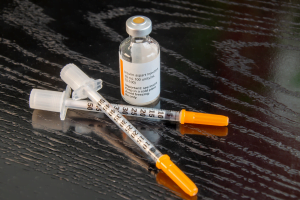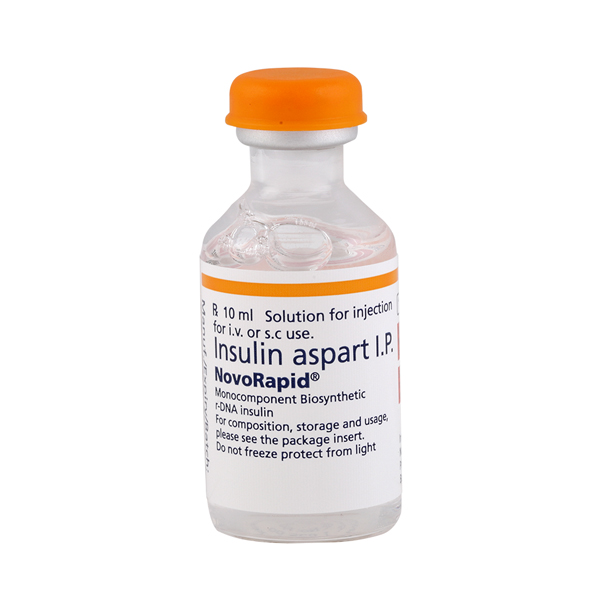What is Diabetic Gastroparesis?
Diabetic gastroparesis refers to a condition called gastroparesis associated with diabetes. This condition interrupts the digestion process, slowing down the normal function of the stomach, delaying the breakdown of food and disrupting its movement into the small intestine. This explains why the food stays in the stomach much longer than it should, thus, resulting in a queasy and nauseous feeling.
Diabetes is the main cause of gastroparesis. It is more common for people who are categorized under type 1 diabetes, while it can also be diagnosed in people with type 2 diabetes. Both of these types cause nerve damage, and one of those nerves is called the vagus nerve. Once it’s damaged, it is unable to send signals normally to the muscles in the stomach. This causes the digestive tract and the stomach to dysfunction, and the movement of food inside becomes out of control.
Signs and Symptoms
The signs and symptoms of diabetic gastroparesis depend on the range of the disease for different individuals. These are as follows:
- Nausea (stomach discomfort and sensation of an urge to vomit because of undigested food)
- Heartburn (acid reflux, burning pain in the lower chest)
- Loss of appetite
- Unintentional weight loss (low-calorie intake or poor absorption of nutrients)
- Stomach spasms
- Abnormal blood sugar level (high and low blood glucose levels)
- Feeling full quickly after eating a little (food is stored longer in the stomach)
- Abdominal bloating
- Pain in the upper abdomen
- Gastroesophageal reflux
Risk Factors
People living with diabetes are at higher risk of getting gastroparesis compared to people with none. This is especially true since diabetes itself causes the condition. The risk factors for acquiring diabetic gastroparesis are as follows:
- Type 1 diabetes – diabetic gastroparesis is more common for this type
- Type 2 diabetes – diabetic gastroparesis becomes evident, and symptoms appear for people who have type 2 diabetes for longer than 10 years
- Coexisting autoimmune diseases – refer to conditions where the immune system mistakenly attacks the body; the most common coexisting autoimmune disease is Rheumatoid arthritis
- History of surgeries performed in the stomach
Aside from diabetes, surgeries involving the esophagus, stomach, and small intestine also cause gastroparesis. Surgical procedures can affect the vagus nerve, which is necessary for normal functions in the stomach. Other than that, people who have a history of receiving treatments (such as radiation therapy for cancer) near the abdomen and stomach region are also prone to getting the disorder.
Complications
Once the food stays too long in the stomach, it can lead to bacterial growth caused by food fermentation inside. The undigested food inside the stomach can harden and form into solid masses called bezoars. It blocks the passage of food and keeps it from moving into the small intestine. The solid masses cause a person to vomit and feel nauseated.
Gastroparesis makes it hard to control diabetes. When the food that has been stored for long in the stomach finally enters the small intestine, the levels of blood sugar rise. When this condition happens constantly, a diabetic person’s blood sugar levels can be difficult to control and manage.
Some of the complications that are likely to develop once a diabetic person’s blood glucose levels become too high include:
- Eye damage (macular degeneration and cataract)
- Kidney damage (kidney failure)
- Heart disease
- Neuropathy (dysfunction of one or more nerves)
- Diabetic ketoacidosis (buildup of acids in the blood)
- Complications in the foot which may lead to amputation
For people with diabetes who experience low blood sugar levels, the complications include:
- Loss of consciousness
- Seizures
- Weakness
- Diabetic coma
There are also other complications that diabetic gastroparesis can cause to many individuals. These are:
- Inflammation in the esophagus
- Chronic vomiting
- Development of bezoars
- Bacterial infections in the stomach
- Malnutrition (unintentional weight loss and lack of nutrients intake)
Treatment
Treatment for diabetic gastroparesis include:
- Proper use of insulin
- Oral medications (pharmaceutical drugs that regulate the functions in the stomach)
- Change of diet and food intake (choosing the right food to eat daily)
- Taking medications such as Metoclopramide (Reglan), Erythromycin, and Domperidone
When treating diabetic gastroparesis, it is important to always examine the blood sugar level. Frequent blood glucose checks help in managing diabetes and treating it well. Along with the aforementioned treatment options, following daily physical exercises and proper food intakes are what keeps diabetes from developing and cause more complications to the affected individuals.
—
Disclaimer: Please note that the contents of this community article are strictly for informational purposes and should not be considered as medical advice. This article, and other community articles, are not written or reviewed for medical validity by Canadian Insulin or its staff. All views and opinions expressed by the contributing authors are not endorsed by Canadian Insulin. Always consult a medical professional for medical advice, diagnosis, and treatment.














